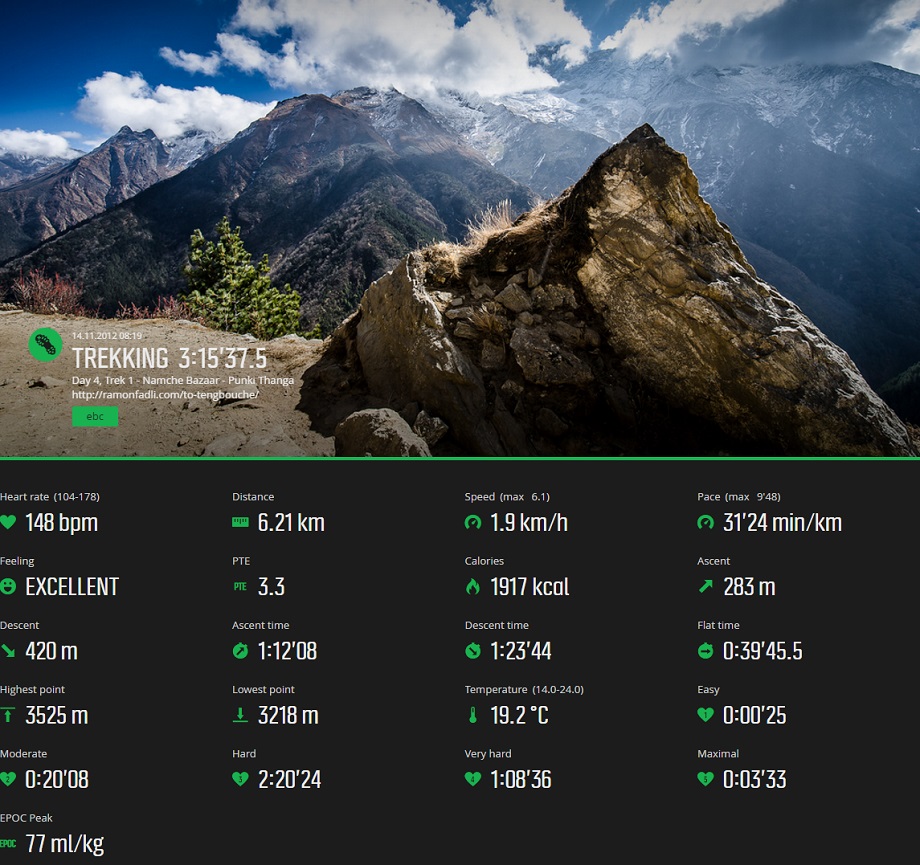EBC Day 07 – Namche Bazaar to Tengbouche
EBC Index
On to Tengbouche

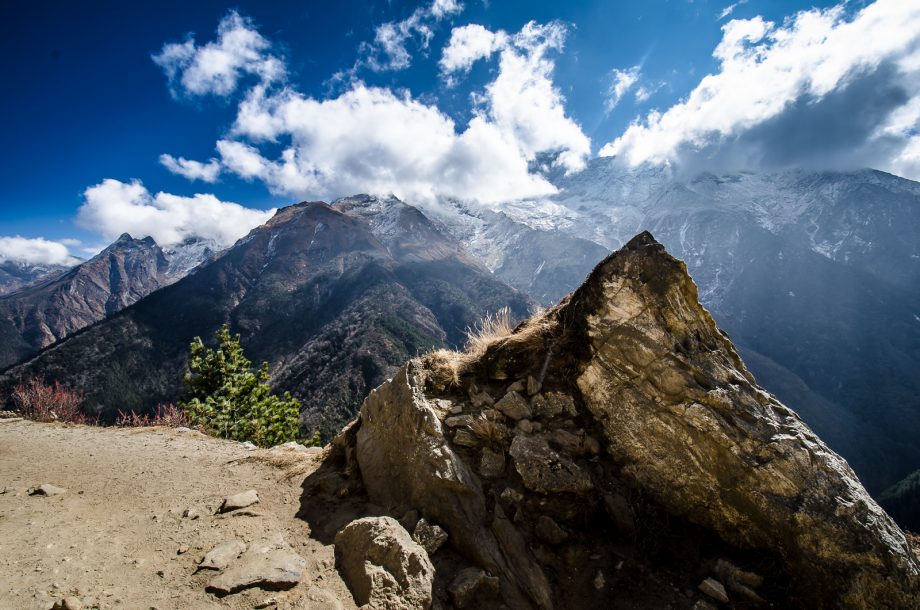 The trail continued on in a north-easterly direction and slowly began to descend down to the Dudh Koshi River. The magnificent spires of Ama Dablam (elevation : 6812 m), that were to dominate the skyline for the next couple of days, lay suspended on the horizon in front of me, keeping my eyes transfixed and my thoughts enchanted as I walked on. Ama Dablam means 'Mother's necklace', apparently named because of the ridges that curve down towards the center - akin to a mother protecting a child. The mountain is also known as 'the Matterhorn of the Himalayas'.
The trail continued on in a north-easterly direction and slowly began to descend down to the Dudh Koshi River. The magnificent spires of Ama Dablam (elevation : 6812 m), that were to dominate the skyline for the next couple of days, lay suspended on the horizon in front of me, keeping my eyes transfixed and my thoughts enchanted as I walked on. Ama Dablam means 'Mother's necklace', apparently named because of the ridges that curve down towards the center - akin to a mother protecting a child. The mountain is also known as 'the Matterhorn of the Himalayas'.
Grunting Yaks
I kept my eyes peeled in the hopes of seeing some wildlife, such as the Himalayan tahr (Hemitragus jemlahicus) or a musk deer (Moschus moschiferus), but the only wildlife I saw (apart from birds) were yaks - lots and lots of yaks.
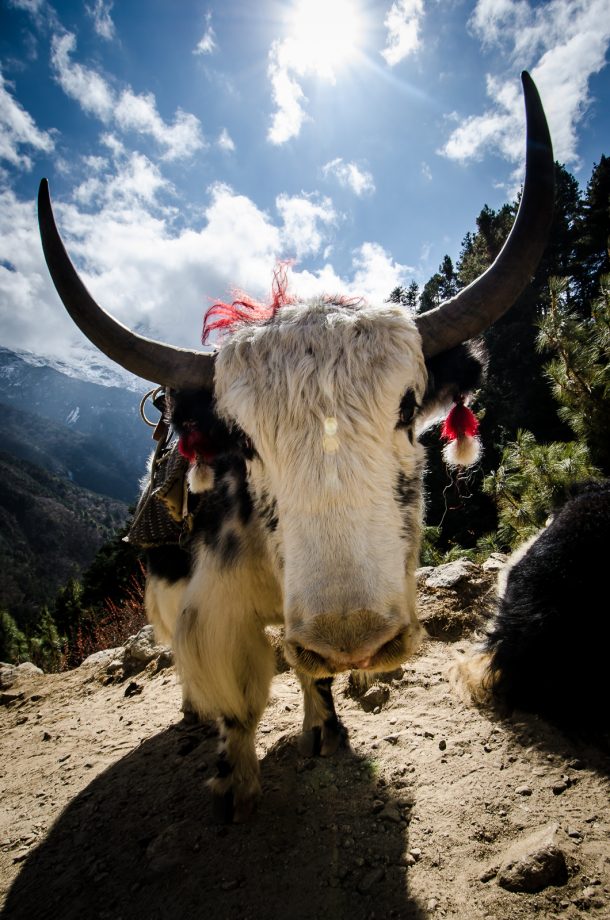
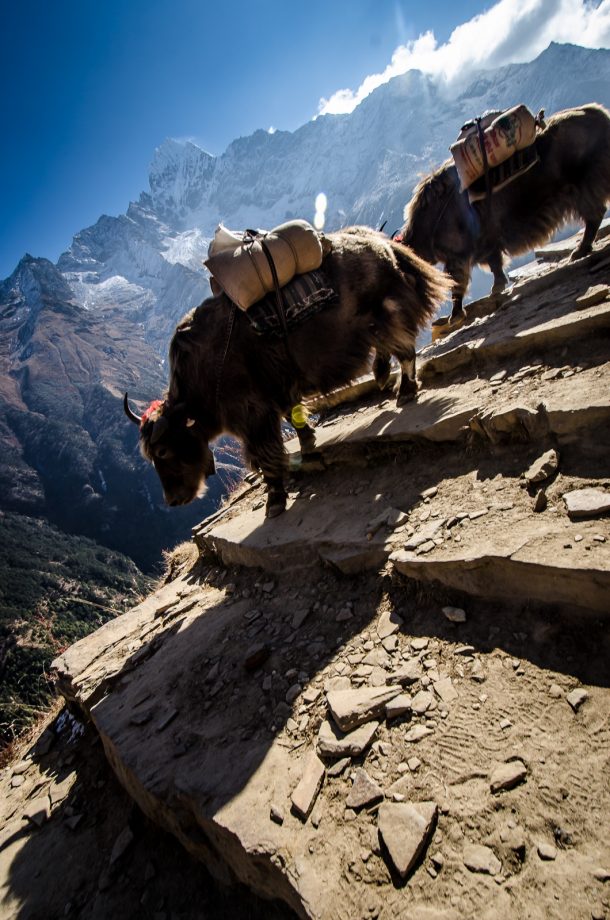 Most yaks (Bos grunniens) are domesticated and are used not only for their milk and meat, but also to transport goods up the mountains. The dried faeces (which doesn't have much of an odour) of yaks are also used as fuel all over Nepal and Tibet, mainly because there is no other source of fuel available above the treeline.
There is also a small population of wild yaks that, although not technically considered a sub-species, are given the taxonomical name of Bos mutus, meaning 'mute ox' - most likely because yaks are not known to make the 'mooing' sound that cattle make and instead just 'grunt' (hence the name 'grunniens').
Domesticated yaks tend to be friendly but yaks in general are distrustful and are known to 'bluff charge' (as can be seen at the end of my video) when they feel threatened, when defending their calves, or just when irritated. I would always advise to err on the side of caution when confronted by a yak as they are heavy, powerful animals and can be very dangerous.
Most yaks (Bos grunniens) are domesticated and are used not only for their milk and meat, but also to transport goods up the mountains. The dried faeces (which doesn't have much of an odour) of yaks are also used as fuel all over Nepal and Tibet, mainly because there is no other source of fuel available above the treeline.
There is also a small population of wild yaks that, although not technically considered a sub-species, are given the taxonomical name of Bos mutus, meaning 'mute ox' - most likely because yaks are not known to make the 'mooing' sound that cattle make and instead just 'grunt' (hence the name 'grunniens').
Domesticated yaks tend to be friendly but yaks in general are distrustful and are known to 'bluff charge' (as can be seen at the end of my video) when they feel threatened, when defending their calves, or just when irritated. I would always advise to err on the side of caution when confronted by a yak as they are heavy, powerful animals and can be very dangerous.
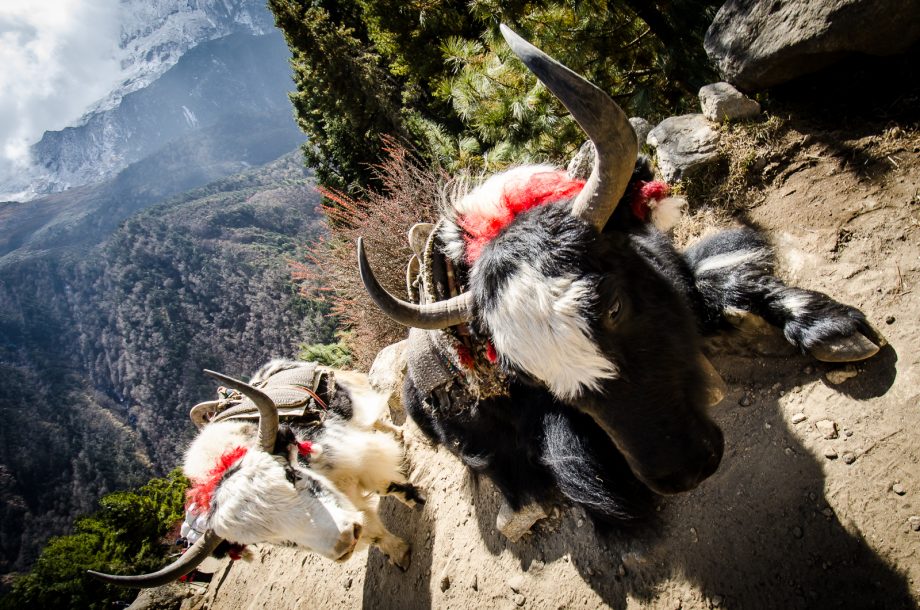
Route Playback
Suunto Movescount Stats
Next (Day 7) : Namche Bazaar to Tengbouche (Part 2)
EBC Index

